FIND THESE STEPS – From Lambton Quay, at 259 Lambton Quay, and on the top level look for the ‘Plimmer Steps’ sign at 86 Boulcott Street.

If Wellington’s steps had a celebrity ranking, this, surely would be the top of the list – it’s in Google Maps and Trip Advisor.
The steps are historic, and fun, with several levels and notable items along the way, too.
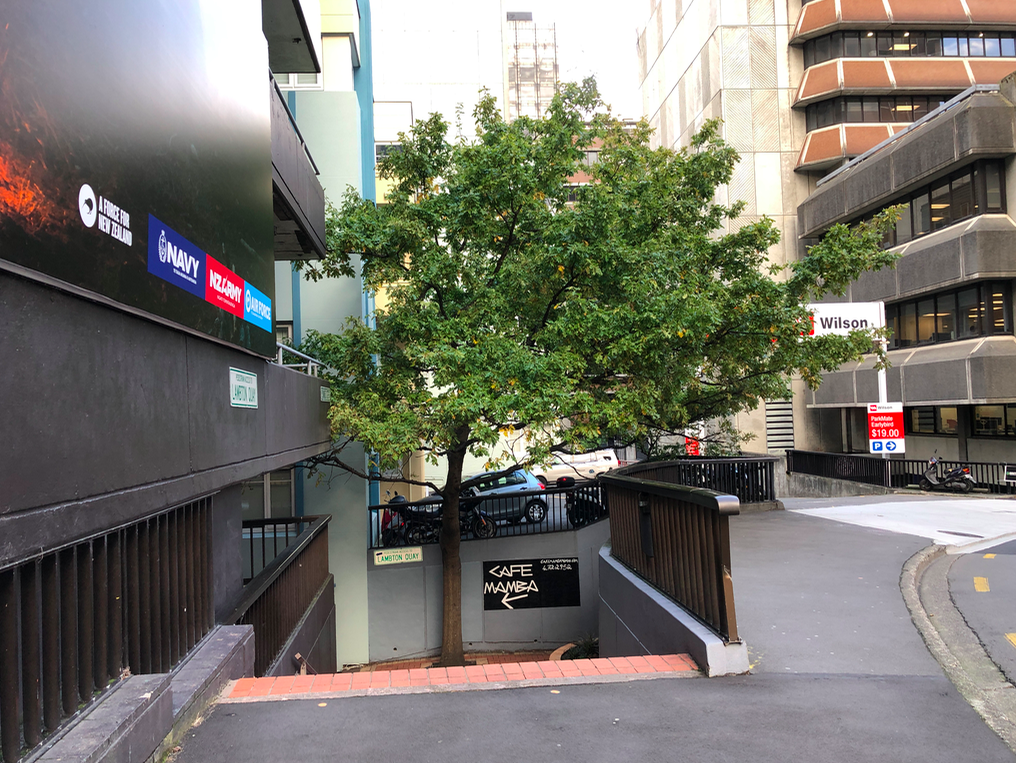
From the top, looking at the entryway from Boulcott Street.

 ‘The Brig Gertrude which brought John Plimmer to Wellington 1841.
‘The Brig Gertrude which brought John Plimmer to Wellington 1841.
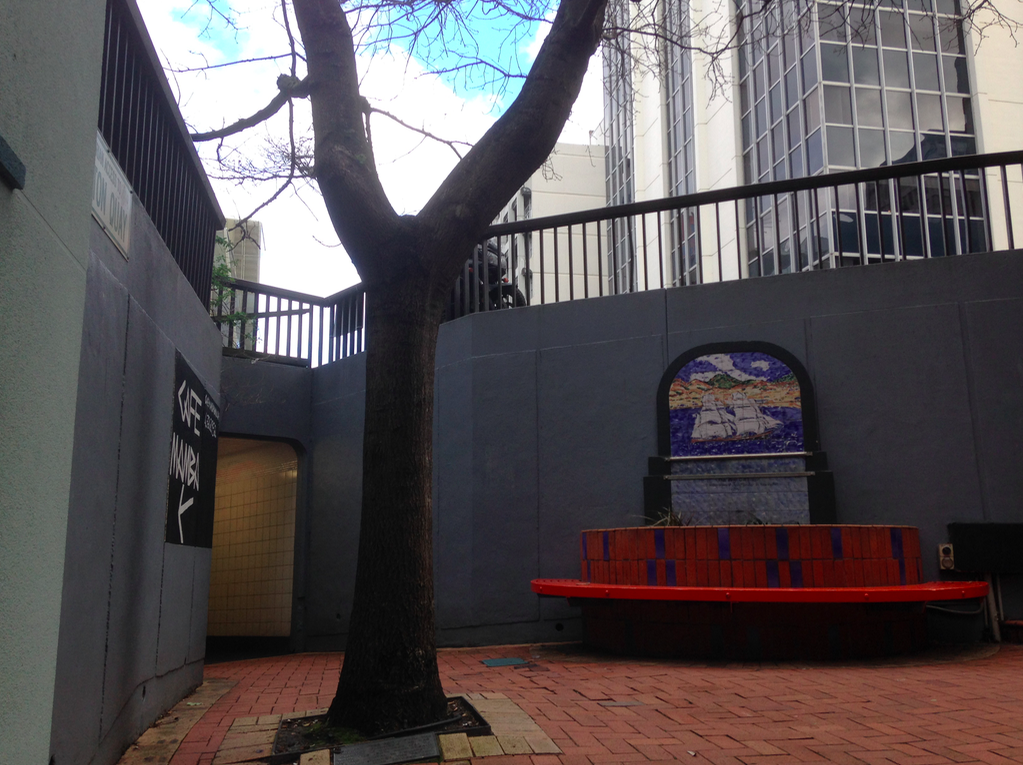
Where else do you find a tree descended from one planted by one of Wellington’s better known public figures? (At the top of the stairs)

‘THIS OAK TREE, GROWN FROM THE ORIGINAL PLIMMER’S OAK, WAS PLANTED IN OCTOBER 1991 TO MARK THE 150TH ANNIVERSARY OF THE ARRIVAL IN WELLINGTON OF JOHN PLIMMER, THE “FATHER” OF WELLINGTON, OCTOBER 1841.’
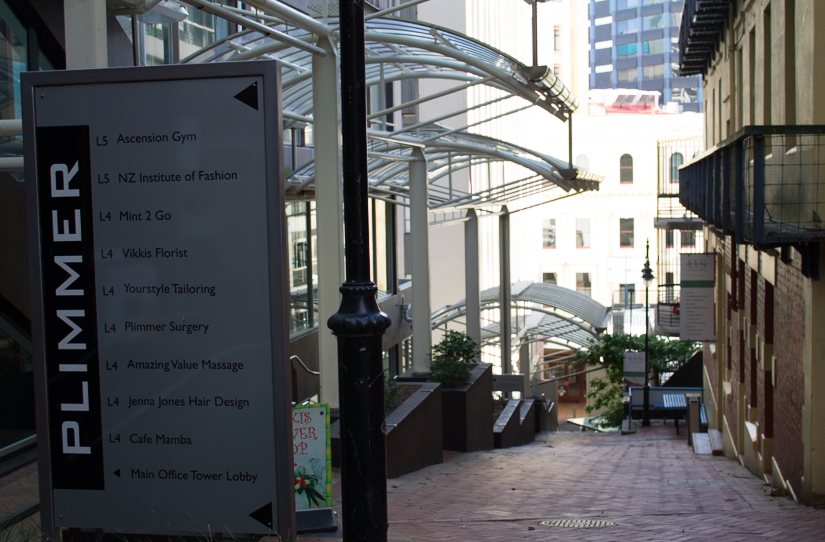
The area surrounding the steps is filled with the ghost sites of Wellington’s history. The lower area was once Dominion Avenue, noted in The Streets of My City as the former site of the Dominion newspaper (currently the Dominion Post, aka Stuff, and possibly yet another name soon under possible new owners). Barrett’s Hotel, one of the first hotels in Wellington, was just next door. All new modern buildings around you now, but just a reminder of what was.
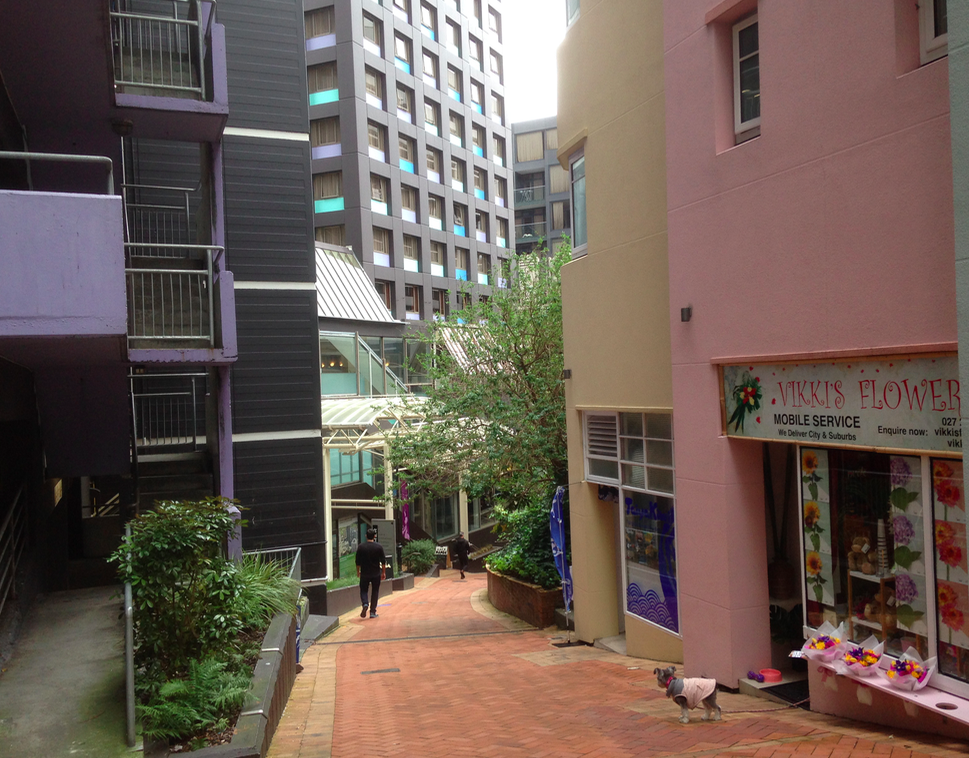
And John Plimmer (1812 – 1905) was a character, as they say. Among his activities, he bought a wreck of a ship and made it into a wharf, called Plimmer’s Ark, or in some circles, Noah’s Ark. Some of the remains are visible under the Old Bank Building, just down Lambton Quay. He built a hotel, the Royal Albert Hotel (on the location of the current St George Hotel, where the Beatles stayed during their tour in 1964), which had the astounding feature of carved wooden heads, likenesses of early settlers (including Wakefield and Plimmer himself), along window arches, and the hotel became known locally as the “Old Identities Hotel.” It was knocked down in 1929.


Plimmer’s home was at the top of the steps. He arrived in Wellington on the ship Gertrude, in October 1841, right after the Treaty of Waitangi was signed in February 1840. The Gertrude is marked with a small tiled construction near the top of the steps.

Half way down the stairs, stands another oak tree and this one may have been planted by Plimmer himself. The nearby plaque tells the story. The tree is looking unwell now.


Just below the Plimmer tree a circular walk makes its way around a few shabby buildings, making a quirky addition to the steps.
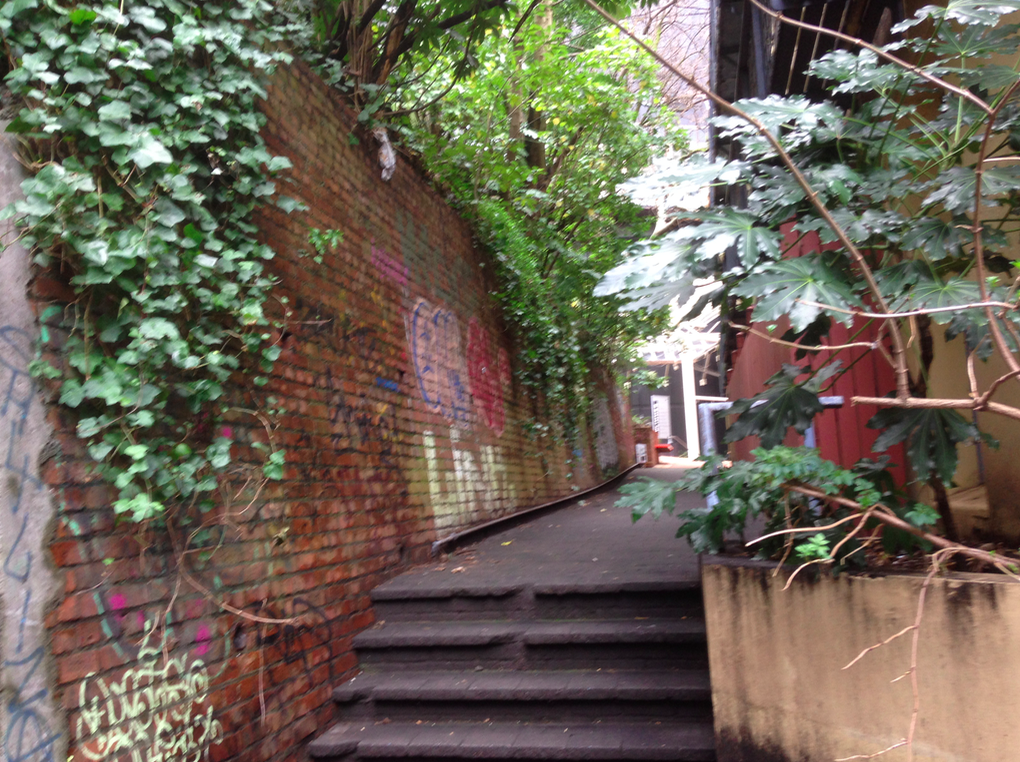
John Plimmer is present, too, at the bottom of the stairs, just inside the corridor to the steps on Lambton Quay. He is beside his dog, Fritz, striding along with hat intact, defying Wellington winds.

(Bronze sculpture by architect Tom Tischler, sculptor Ross Wilson, Judy Alexander and Alex Kennedy, 1996)
Why ‘Father’ of Wellington? According to the Dominion Post, he started a brickworks and set up Plimmer’s Ark Wharf, served on the Provincial Council, the Chamber of Commerce, and Wellington City Council, advocated land reclamation to expand Wellington into the harbour, served on the railway company, and the New Zealand Times. Plimmerton, the beautiful little village up the Kapati coast, is named for him. So all that activity earned him the title, as well as his own efforts to make it so.
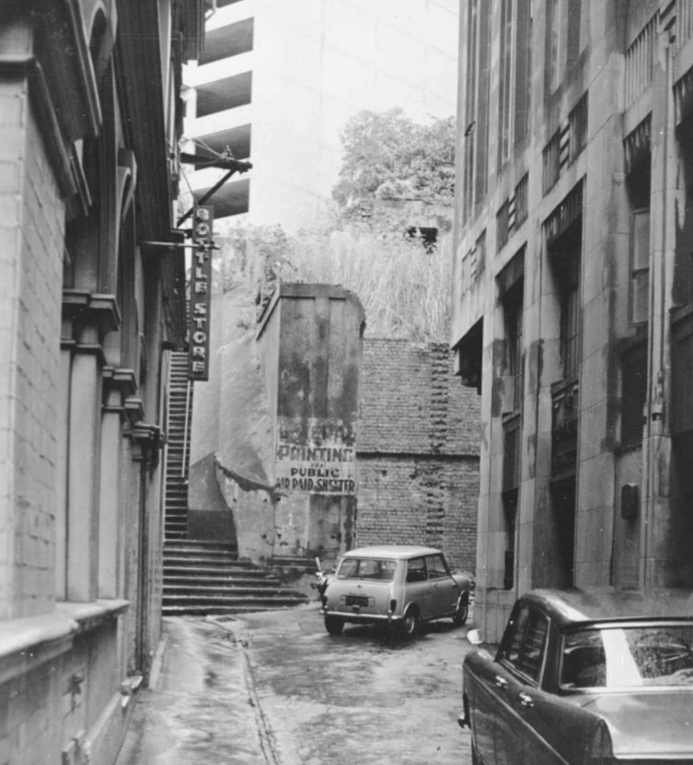
The view before the rebuild. Plimmer Steps, public air raid shelter (1960s) WCC Archives 00138-0-6064.
And just for fun, there apparently is some dispute as to the name – the sign at the top of the stairs indicate ‘Plimmer Steps’ but Ms Irvine-Smith in Streets of My City has it as ‘Plimmer’s Steps’.
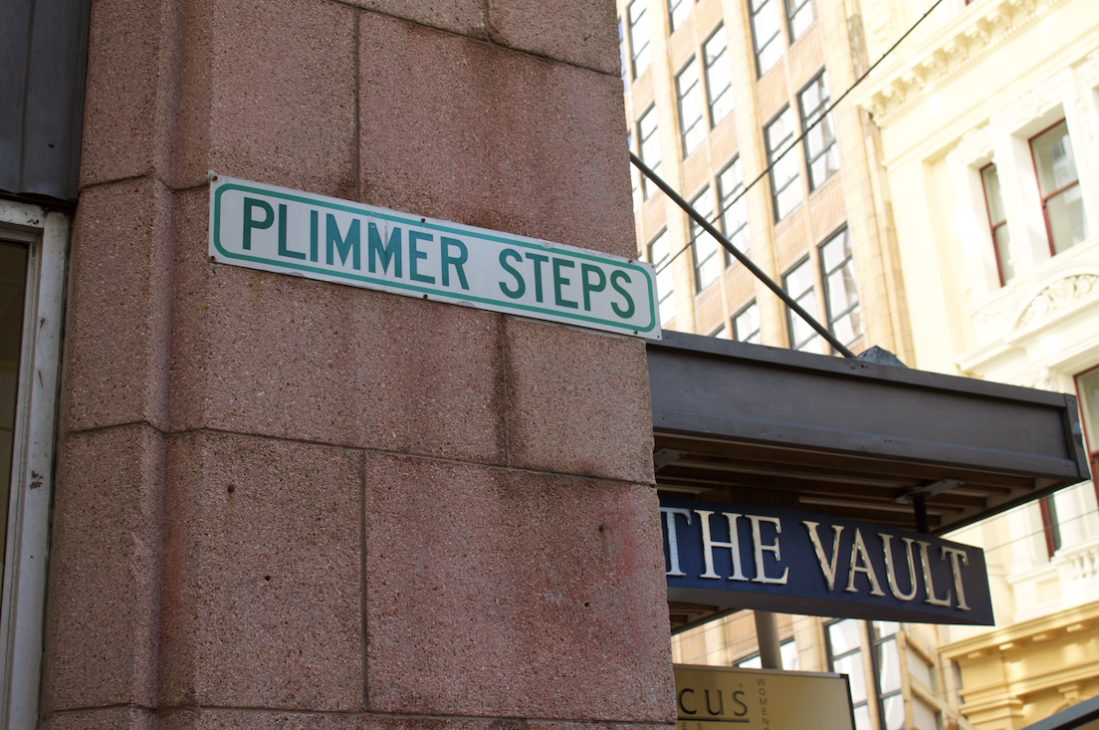 Look for this at Lambton Quay.
Look for this at Lambton Quay.
And a little point of difference – Plimmer Steps to City Council, Plimmer’s Steps to Ms Irvine-SMith, and most historical notations.

Evening Post, 2 November, 1921, CC-NZ-by NC-SA
https://paperspast.natlib.govt.nz/newspapers/EP19211102.2.93
Employment Opportunities at Plimmer’s Steps in 1911:

Dominion, 01-12-1911, PapersPast, CC-NZ-by-NC-SA
Plimmer’s Obituary in 1905:






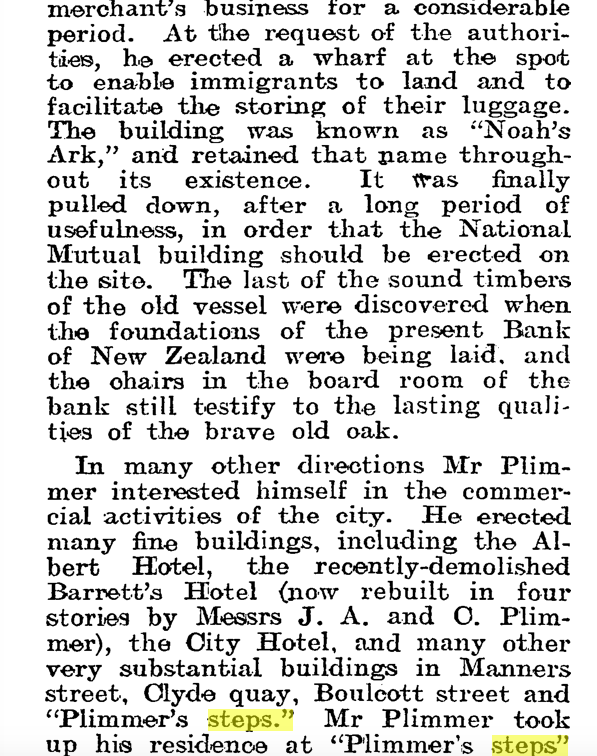
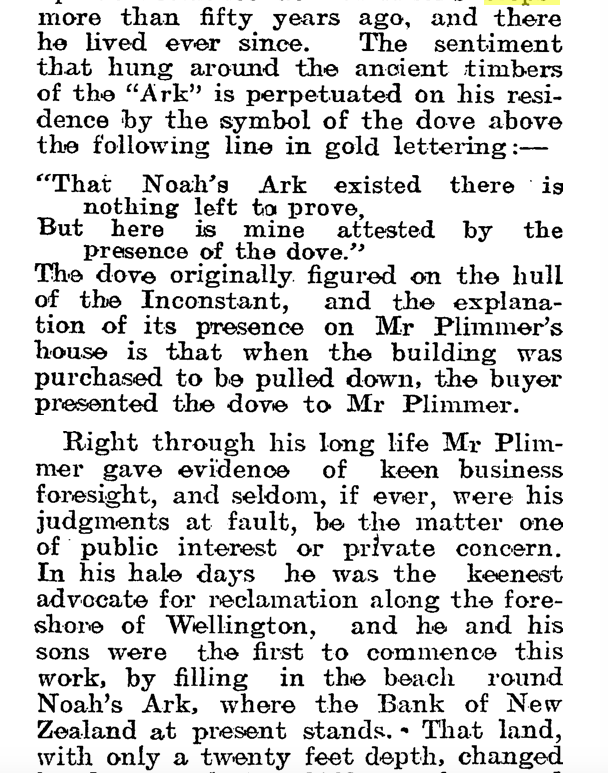


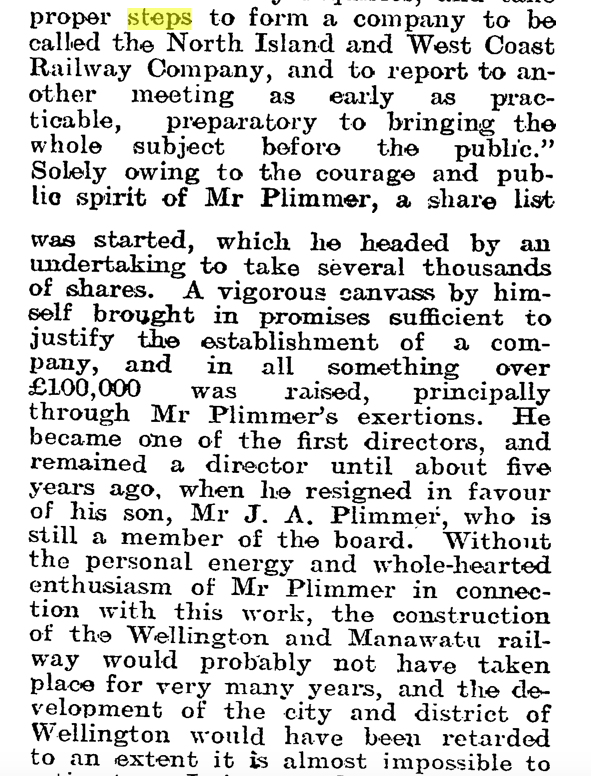
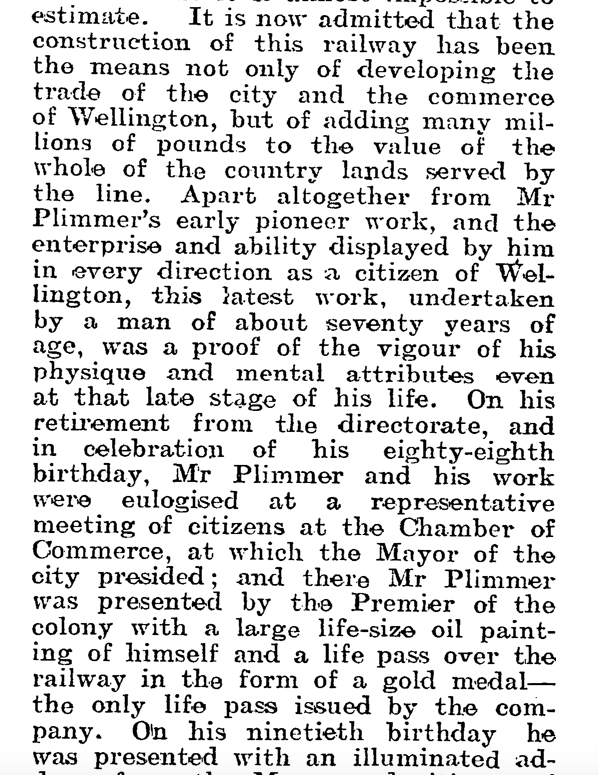

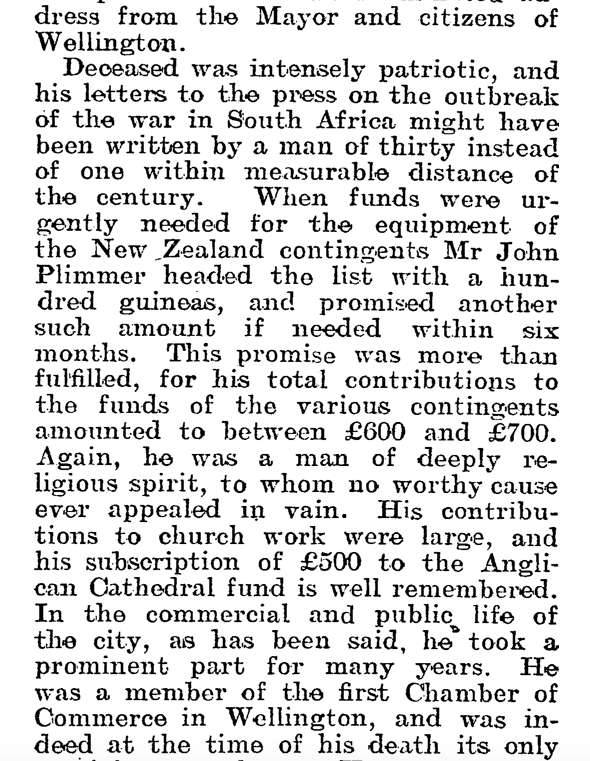

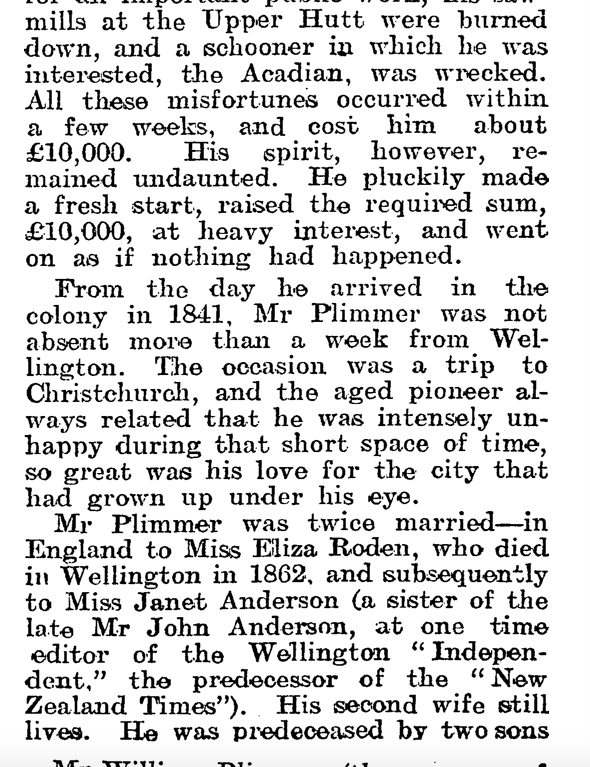
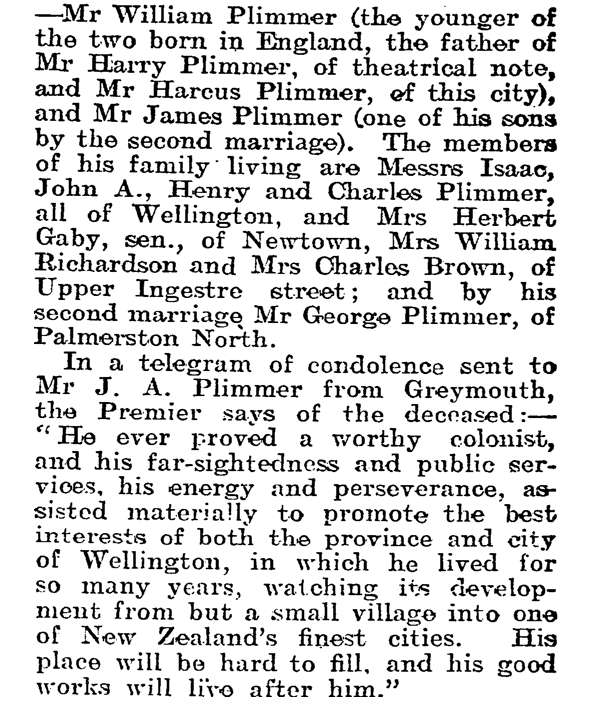
New Zealand Mail, 11 January 1905, PapersPast, CC-NZ-by-NC-SA